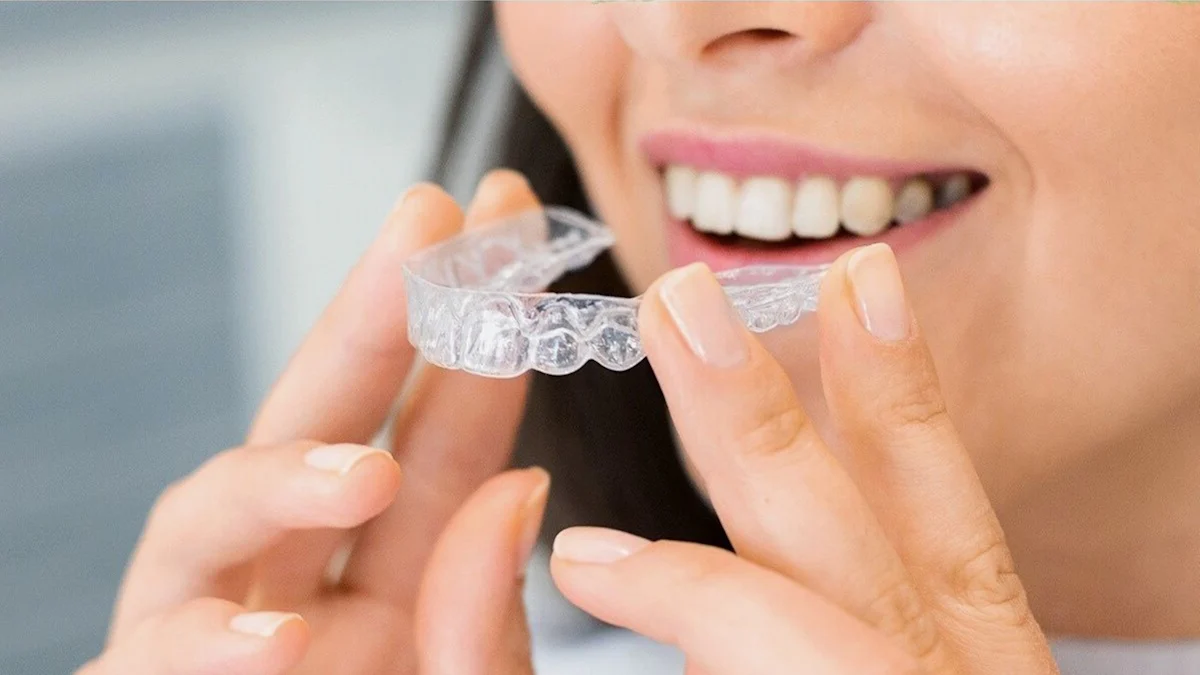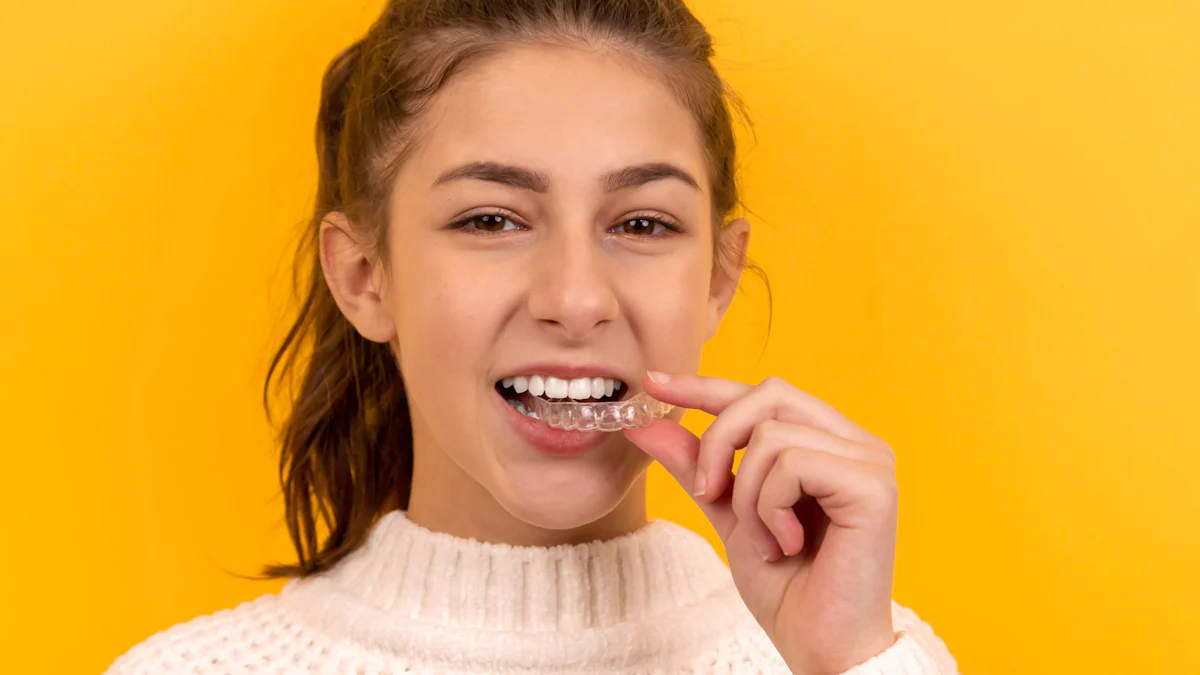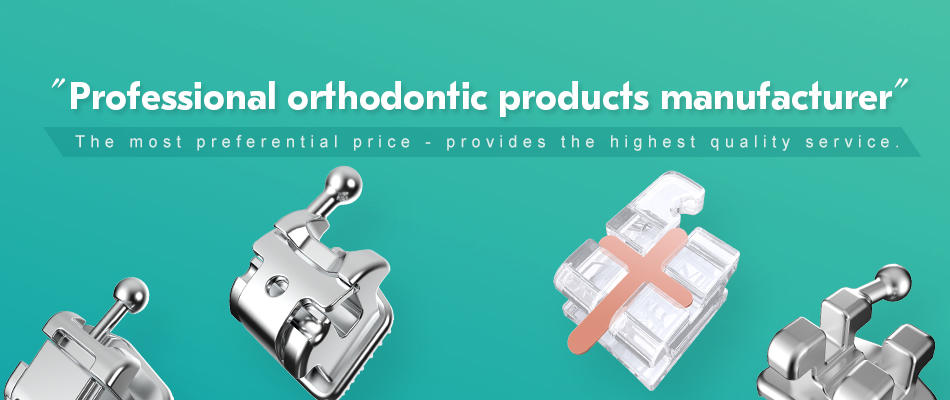 Self-ligating brackets represent a modern advancement in orthodontics. These brackets feature a built-in mechanism that secures the archwire without elastic ties or metal ligatures. This innovative design reduces friction, allowing your teeth to move more efficiently. You may experience shorter treatment times and less discomfort compared to traditional braces. Additionally, self-ligating brackets promote better oral hygiene by eliminating elastic ties, which often trap food particles. Options like the Self Ligating Bracket – Spherical – MS3 also offer enhanced functionality and aesthetics, making them a popular choice for patients seeking effective and comfortable orthodontic solutions.
Self-ligating brackets represent a modern advancement in orthodontics. These brackets feature a built-in mechanism that secures the archwire without elastic ties or metal ligatures. This innovative design reduces friction, allowing your teeth to move more efficiently. You may experience shorter treatment times and less discomfort compared to traditional braces. Additionally, self-ligating brackets promote better oral hygiene by eliminating elastic ties, which often trap food particles. Options like the Self Ligating Bracket – Spherical – MS3 also offer enhanced functionality and aesthetics, making them a popular choice for patients seeking effective and comfortable orthodontic solutions.Key Takeaways
- Self-ligating brackets reduce friction, allowing for more efficient tooth movement and potentially shorter treatment times compared to traditional braces.
- These brackets enhance comfort by applying gentler pressure, minimizing soreness during adjustments and creating a smoother orthodontic experience.
- Maintaining oral hygiene is easier with self-ligating brackets, as they eliminate elastic ties that trap food particles, reducing the risk of cavities and gum issues.
- Self-ligating brackets offer a more discreet appearance, with options like clear or ceramic designs that blend with your natural teeth, boosting your confidence during treatment.
- While self-ligating brackets may have a higher upfront cost, their benefits, such as fewer adjustments and faster results, can provide long-term value.
- Consulting with an orthodontist is essential to determine if self-ligating brackets are suitable for your specific orthodontic needs and goals.
How Do Self-Ligating Brackets Work?

Self-ligating brackets operate using an advanced mechanism that eliminates the need for elastic ties. These brackets feature a small built-in clip or sliding door that holds the archwire securely in place. This design reduces friction, allowing your teeth to move more freely and efficiently. The reduced resistance not only enhances comfort but also accelerates the alignment process. By minimizing unnecessary pressure, self-ligating brackets create a smoother orthodontic experience for you.
The Mechanism Behind Self-Ligating Brackets
The core of self-ligating brackets lies in their innovative locking system. Unlike traditional braces, which rely on elastic bands or metal ties, these brackets use a specialized clip to secure the archwire. This clip adjusts as your teeth shift, maintaining consistent pressure for optimal movement. The absence of elastic ties also means fewer obstacles for cleaning, making it easier for you to maintain good oral hygiene throughout your treatment.
Types of Self-Ligating Brackets
Self-ligating brackets come in two main types, each offering unique benefits. Understanding these options can help you make an informed decision about your orthodontic care.
Passive and Active Self-Ligating Brackets
Passive self-ligating brackets use a simple sliding mechanism that holds the archwire loosely. This design reduces friction significantly, allowing for gentle tooth movement. Active self-ligating brackets, on the other hand, apply more pressure by using a spring-loaded clip. This added force can enhance the precision of tooth alignment. Both types aim to provide you with a more comfortable and efficient treatment experience compared to traditional braces.
Self Ligating Bracket – Spherical – MS3
The Self Ligating Bracket – Spherical – MS3 represents a cutting-edge option in orthodontics. Its spherical design ensures smooth interaction between the bracket and the archwire, further reducing friction. This advanced bracket also prioritizes aesthetics, offering a discreet appearance that appeals to many patients. The Self Ligating Bracket – Spherical – MS3 combines functionality and visual appeal, making it a popular choice for those seeking effective and comfortable orthodontic solutions.
Self-Ligating Brackets vs. Traditional Braces
Design Differences
Self-ligating brackets and traditional braces differ significantly in their design. Traditional braces use elastic ties or metal ligatures to secure the archwire to the brackets. These ties often create additional friction, which can slow down tooth movement. In contrast, self-ligating brackets feature a built-in clip or sliding mechanism that holds the archwire in place. This innovative design eliminates the need for elastic ties, reducing friction and allowing your teeth to move more freely.
The absence of elastic ties in self-ligating brackets also improves their appearance. Traditional braces often have colorful or noticeable elastic bands, which can make them more visible. Self-ligating brackets, especially clear or ceramic options, offer a more discreet look. If you prefer a less noticeable orthodontic treatment, self-ligating brackets may align better with your aesthetic goals.
Impact on Treatment Process
The treatment process with self-ligating brackets differs from that of traditional braces in several ways. First, self-ligating brackets often require fewer adjustments. The built-in clip system allows the archwire to move more efficiently, reducing the need for frequent orthodontic visits. This can save you time and make the treatment process more convenient.
Self-ligating brackets also tend to shorten overall treatment time. The reduced friction between the archwire and brackets allows for smoother and faster tooth movement. Traditional braces, with their elastic ties, may take longer to achieve the same results due to increased resistance.
Comfort is another key difference. Self-ligating brackets apply gentler pressure to your teeth, which can minimize discomfort during adjustments. Traditional braces, on the other hand, may cause more soreness due to the tension created by elastic ties.
Lastly, self-ligating brackets make it easier to maintain good oral hygiene. Without elastic ties, there are fewer places for food particles and plaque to accumulate. This reduces the risk of cavities and gum issues during your orthodontic treatment. Traditional braces, with their elastic ties, require more effort to keep clean, which can be challenging for some patients.
Benefits of Self-Ligating Brackets

Shorter Treatment Time
Self-ligating brackets can help you achieve a straighter smile in less time. Their advanced design reduces friction between the archwire and brackets, allowing your teeth to move more efficiently. This streamlined movement often shortens the overall duration of your orthodontic treatment. Unlike traditional braces, which rely on elastic ties that may slow down progress, self-ligating brackets maintain consistent pressure for faster results. If you want to minimize the time spent wearing braces, this option could be ideal for you.
Improved Comfort
Orthodontic treatment doesn’t have to be uncomfortable. Self-ligating brackets apply gentler pressure to your teeth, which can reduce soreness during adjustments. The absence of elastic ties eliminates unnecessary tension, creating a smoother experience for you. The built-in clip system adapts as your teeth shift, ensuring steady but comfortable movement. Whether you’re concerned about pain or irritation, self-ligating brackets prioritize your comfort throughout the process.
Better Oral Hygiene
Maintaining oral hygiene becomes easier with self-ligating brackets. Traditional braces use elastic ties that can trap food particles and plaque, increasing the risk of cavities and gum issues. Self-ligating brackets eliminate these ties, leaving fewer areas for debris to accumulate. This design simplifies brushing and flossing, helping you keep your teeth and gums healthy during treatment. Options like the Self Ligating Bracket – Spherical – MS3 also enhance cleanliness with their smooth, rounded edges, making them a practical choice for better oral care.
Enhanced Aesthetics
Self-ligating brackets offer a more discreet option for orthodontic treatment. Their design eliminates the need for elastic ties, which often draw attention to traditional braces. You can choose clear or ceramic self-ligating brackets that blend with your natural tooth color. This feature makes them less noticeable, allowing you to feel more confident during your treatment.
The streamlined appearance of self-ligating brackets enhances your smile even before your teeth are fully aligned. Unlike traditional braces, which may appear bulky due to additional components, self-ligating brackets maintain a sleek and minimalistic look. This aesthetic advantage appeals to individuals who prioritize subtlety in their orthodontic care.
Options like the Self Ligating Bracket – Spherical – MS3 take aesthetics a step further. Its spherical design not only reduces friction but also ensures a smooth and polished finish. This advanced bracket minimizes visual distractions, making it an excellent choice for those seeking both functionality and a refined appearance.
If you value a treatment option that aligns with your lifestyle and aesthetic preferences, self-ligating brackets provide a modern and visually appealing solution. They allow you to focus on achieving a straighter smile without compromising your confidence.
Considerations and Potential Drawbacks
Cost of Self-Ligating Brackets
The cost of self-ligating brackets often exceeds that of traditional braces. Their advanced design and innovative features contribute to the higher price. If you are considering this option, you should evaluate your budget and insurance coverage. Some orthodontic practices offer payment plans to make treatment more affordable. Comparing costs with the benefits, such as shorter treatment time and improved comfort, can help you decide if the investment aligns with your priorities.
You may also want to discuss the long-term value of self-ligating brackets with your orthodontist. While the upfront cost may seem high, the potential for fewer visits and faster results could offset some expenses. Understanding the financial commitment ensures you make an informed decision about your orthodontic care.
Suitability for All Orthodontic Cases
Self-ligating brackets may not suit every orthodontic case. They work well for mild to moderate alignment issues but may not address complex dental problems effectively. If you have severe crowding, bite issues, or other intricate concerns, traditional braces or alternative treatments might be more appropriate.
Your orthodontist will assess your specific needs and recommend the best course of action. Factors like age, dental health, and treatment goals play a role in determining suitability. You should ask questions and share your expectations during the consultation. This helps ensure the chosen treatment aligns with your desired outcome.
In some cases, combining self-ligating brackets with other orthodontic techniques may provide optimal results. Exploring all available options allows you to choose a solution tailored to your unique situation.
Self-ligating brackets offer several advantages that can transform your orthodontic experience. You can enjoy shorter treatment times, improved comfort, and easier oral hygiene maintenance. Their sleek design also enhances aesthetics, giving you a more confident smile throughout the process. These benefits make them a modern and effective choice for many patients.
To determine if self-ligating brackets suit your needs, consult an orthodontist. A professional evaluation will help you understand your options and choose the best path for achieving a healthier, straighter smile. Take the first step toward your ideal orthodontic solution today.
Post time: Dec-05-2024


